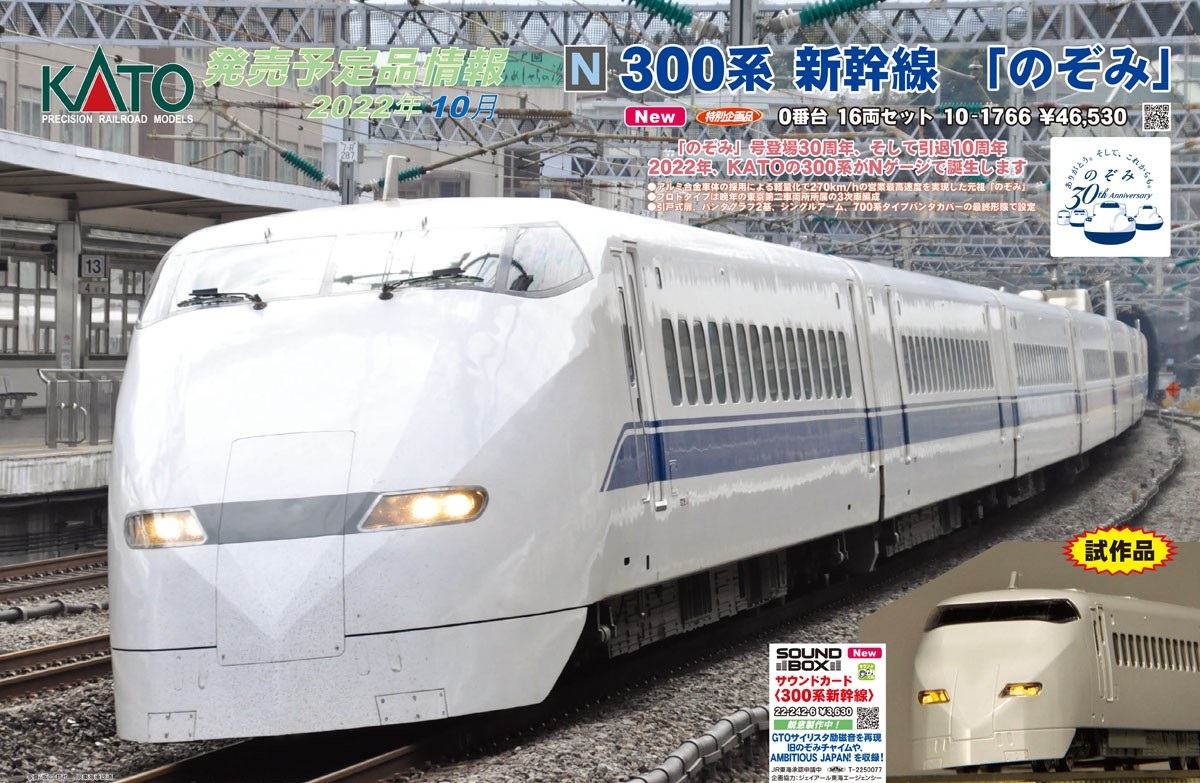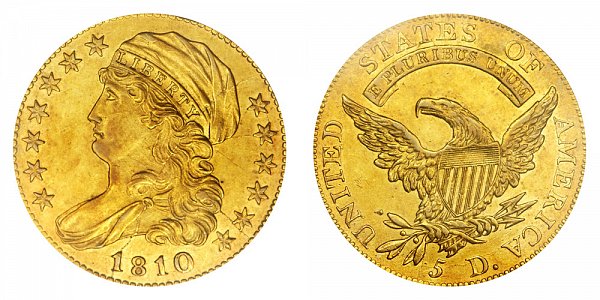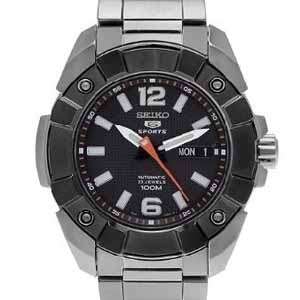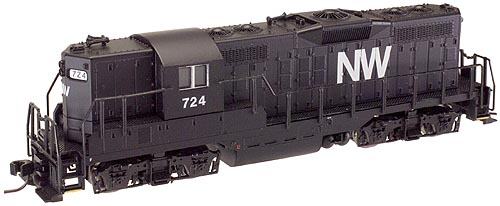Specific Item Information: The 300 series was developed for 270km/h operation of the Shinkansen and appeared in 1992. In addition to the weight reduction by adopting an aluminum alloy body and the body shape with excellent aerodynamic characteristics, many technologies such as bolsterless trolley, VVVF inverter control, and regenerative braking are incorporated for the first time as a Shinkansen. We made our debut on the express train Nozomi that connects Tokyo and Shin-Osaka in 2 hours and 30 minutes, and continued to play an active role until 2012.
The prototype is the third car belonging to the Tokyo No. 2 Vehicle Office around 2010. The side door is a sliding door type, reducing one pantograph and reproducing the appearance after replacement with a single arm pantograph. Simple yet impressive forehead shape, accurately reproduces the aerodynamic low vehicle height
Front glass reproduces the smoked appearance and the organization number is printed Slotless motor for smoother and quieter running performance LED headlight/taillight A diaphragm coupler is used for the intermediate connection part Destination display sticker included "AMBITIOUS JAPAN!" logo sticker is included DCC friendly
The prototype is the third car belonging to the Tokyo No. 2 Vehicle Office around 2010. The side door is a sliding door type, reducing one pantograph and reproducing the appearance after replacement with a single arm pantograph. Simple yet impressive forehead shape, accurately reproduces the aerodynamic low vehicle height
Front glass reproduces the smoked appearance and the organization number is printed Slotless motor for smoother and quieter running performance LED headlight/taillight A diaphragm coupler is used for the intermediate connection part Destination display sticker included "AMBITIOUS JAPAN!" logo sticker is included DCC friendly
Road Name History: The Central Japan Railway Company (東海旅客鉄道株式会社 Tōkai Ryokaku Tetsudō Kabushiki-gaisha) is the main railway company operating in the Chūbu (Nagoya) region of central Japan. It is officially abbreviated in English as JR Central and in Japanese as JR Tōkai (JR東海). Its headquarters are located in the JR Central Towers in Nakamura-ku, Nagoya, Aichi Prefecture.
The company's operational hub is Nagoya Station. The busiest railway line it operates is the Tōkaidō Main Line between Atami Station and Maibara Station. JR Central also operates the Tōkaidō Shinkansen between Tokyo Station and Shin-Ōsaka Station. Additionally it is responsible for the Chūō Shinkansen?a proposed maglev service between Tokyo Station (or Shinagawa Station) and Ōsaka Station (or Shin-Ōsaka Station), of which a short demonstration section has been built. Currently, the company is conducting demonstrations of its shinkansen to railway officials from different countries in the effort to market bullet train technology overseas.
JR Central is Japan's most profitable and highest throughput high-speed-rail operator, carrying 138 million high-speed-rail passengers in 2009, considerably more than the world's largest airline. Japan recorded a total of 289 million high-speed-rail passengers in 2009.
From Wikipedia
The company's operational hub is Nagoya Station. The busiest railway line it operates is the Tōkaidō Main Line between Atami Station and Maibara Station. JR Central also operates the Tōkaidō Shinkansen between Tokyo Station and Shin-Ōsaka Station. Additionally it is responsible for the Chūō Shinkansen?a proposed maglev service between Tokyo Station (or Shinagawa Station) and Ōsaka Station (or Shin-Ōsaka Station), of which a short demonstration section has been built. Currently, the company is conducting demonstrations of its shinkansen to railway officials from different countries in the effort to market bullet train technology overseas.
JR Central is Japan's most profitable and highest throughput high-speed-rail operator, carrying 138 million high-speed-rail passengers in 2009, considerably more than the world's largest airline. Japan recorded a total of 289 million high-speed-rail passengers in 2009.
From Wikipedia
Brand/Importer Information: Kato Precision Railroad Models (関水金属株式会社 Sekisui Kinzoku Kabushikigaisha) is a Japanese manufacturer of model railroad equipment in N and HO scales. The Tokyo-based company manufactures models based on Japanese prototypes (such as the Shinkansen bullet train) for the Japanese market, North American prototypes for the North American market and European high-speed trains for European market.
The Kato (pronounced kah-toe) model railroad companies were founded by Yuji Kato, father of current president Hiroshi Kato, of the parent company Sekisui Kinzoku Co., Ltd.
The design and distribution of models for the North American market are handled by their U.S. subsidiary, Kato USA, located in Schaumburg, Illinois.
The design of special models for the European market is handled for some of them by their partner, Lemke, whereas the general distribution of Kato products in Europe is handled by NOCH; both companies are located in Germany.
As a result, some Kato European models are sold as Kato Lemke and others as Kato (alone).
The Kato (pronounced kah-toe) model railroad companies were founded by Yuji Kato, father of current president Hiroshi Kato, of the parent company Sekisui Kinzoku Co., Ltd.
The design and distribution of models for the North American market are handled by their U.S. subsidiary, Kato USA, located in Schaumburg, Illinois.
The design of special models for the European market is handled for some of them by their partner, Lemke, whereas the general distribution of Kato products in Europe is handled by NOCH; both companies are located in Germany.
As a result, some Kato European models are sold as Kato Lemke and others as Kato (alone).
Item created by: CNW400 on 2022-12-03 11:33:38
If you see errors or missing data in this entry, please feel free to log in and edit it. Anyone with a Gmail account can log in instantly.
If you see errors or missing data in this entry, please feel free to log in and edit it. Anyone with a Gmail account can log in instantly.










